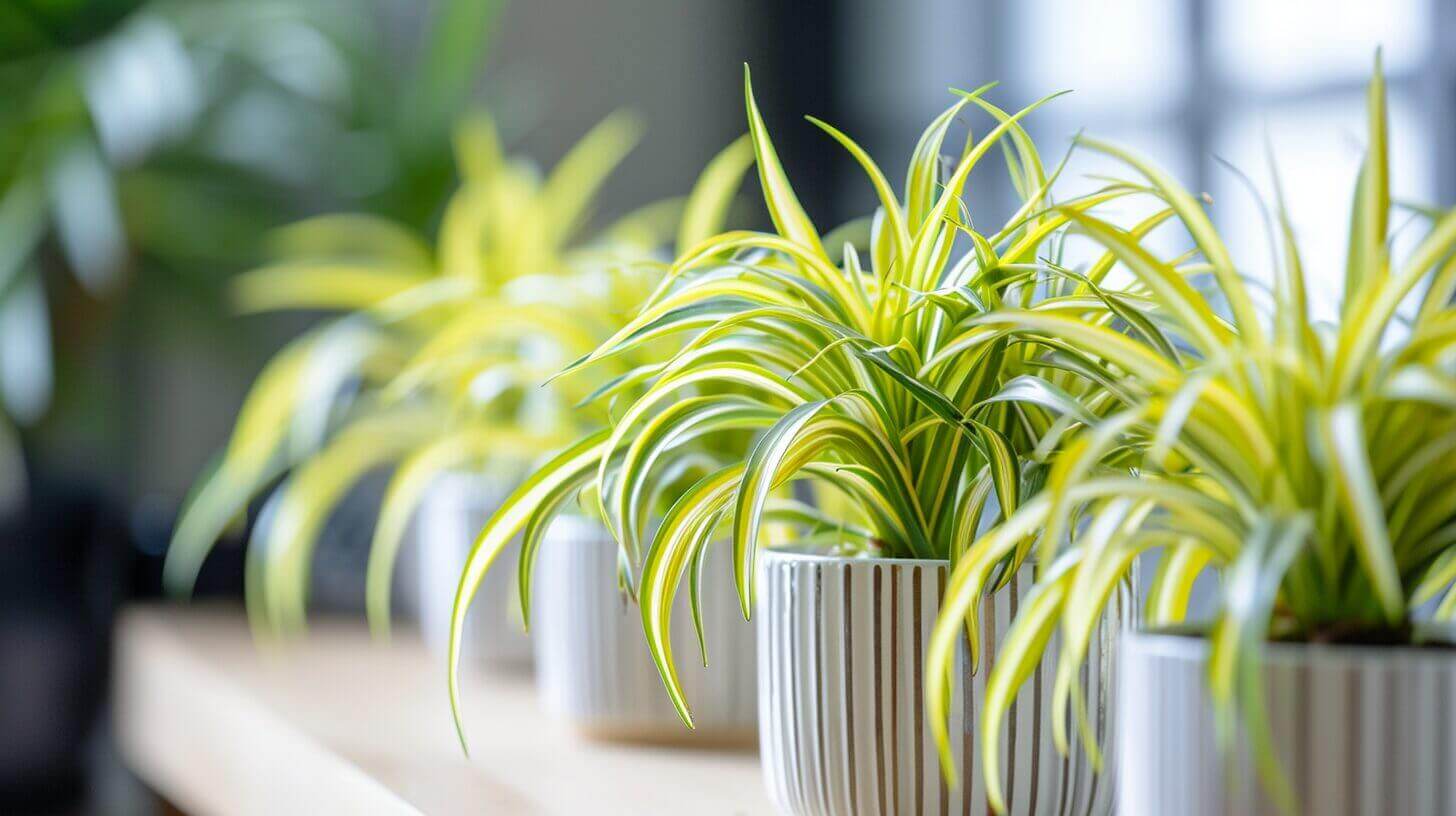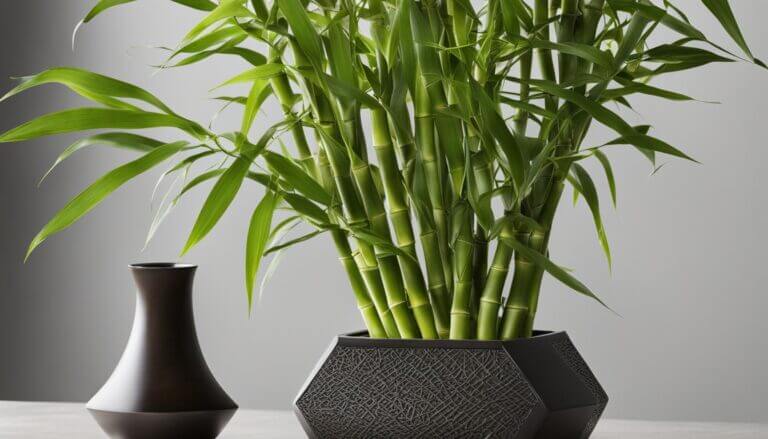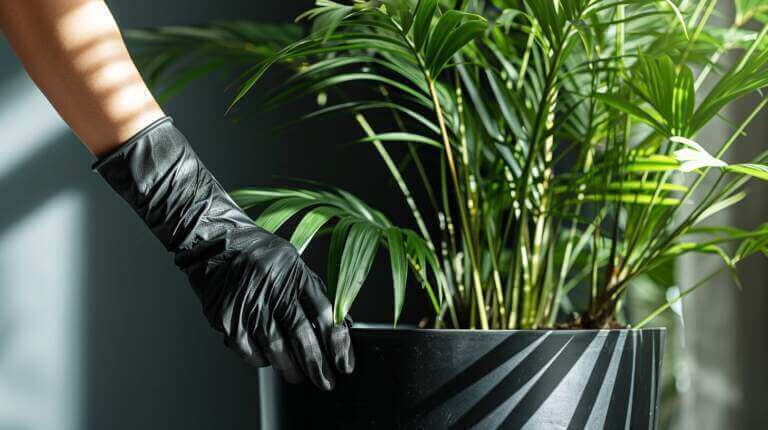Discover the extraordinary benefits of incorporating a spider plant into your home.
This remarkable houseplant possesses unparalleled air purification properties, effortlessly cleansing the atmosphere of toxins and impurities.
With its low maintenance requirements and adaptability to various lighting conditions, the spider plant is a perfect choice for any busy individual seeking a touch of nature indoors.
Furthermore, studies suggest that the presence of this resilient plant can reduce stress and anxiety, promoting a calm and serene environment.
Unleash the potential of the spider plant and experience its versatile nature firsthand.
Key Takeaways
- Spider plants have air purification properties, removing harmful pollutants and acting as natural humidifiers.
- They are easy to care for and require minimal maintenance, making them a low-maintenance houseplant.
- Spider plants can adapt to various lighting conditions, making them suitable for rooms with limited natural light.
- Having spider plants in the home can contribute to stress relief, improved mental health, and a soothing ambiance.
Improve Indoor Air Purification Properties
How effectively does a spider plant purify the air in a household environment?
Spider plants are known for their ability to improve indoor air quality by removing harmful pollutants such as formaldehyde, benzene, and carbon monoxide. According to a study conducted by NASA, spider plants were found to be effective in reducing air pollutants by up to 90%. They do this by absorbing these chemicals through their leaves and converting them into harmless substances.
Additionally, spider plants act as a natural humidifier, releasing moisture into the air and helping to alleviate dryness in the environment. This can be particularly beneficial during the winter months when indoor air tends to be drier.
With their air-purifying and humidifying properties, spider plants make an excellent choice for those looking to create a healthier and more comfortable living space.
Moving on to the next section, let’s explore the easy care and low maintenance requirements of spider plants.
Easy Care and Low Maintenance
Spider plants are generally considered to be extremely low maintenance and require minimal care. They are perfect for busy individuals or those who may not have a green thumb.
Here are three reasons why spider plants are easy to care for:
- Drought tolerance: Spider plants have a high level of drought tolerance, meaning they can withstand periods of neglect or forgetfulness when it comes to watering. This makes them ideal for those who may not have the time or inclination to water their plants regularly.
- Aesthetic appeal: Spider plants are known for their striking appearance, with their long, arching leaves and delicate white flowers. They add a touch of elegance and beauty to any room, making them a popular choice for interior decoration.
- Low maintenance: In addition to their drought tolerance, spider plants are also low maintenance in terms of their overall care. They thrive in a wide range of light conditions, from bright indirect light to low light, and they can adapt to various indoor temperatures. Regular pruning and occasional fertilization are all that’s needed to keep them healthy and thriving.
Adaptability to Various Lighting Conditions
The spider plant’s adaptability to various lighting conditions is one of its standout features as a houseplant. Indoor gardening enthusiasts will appreciate the flexibility this plant offers when it comes to finding the perfect spot for it in their homes.
Spider plants can tolerate a wide range of lighting conditions, from bright, indirect light to lower light levels. This makes them suitable for different areas of the house, including rooms with limited natural light.
When it comes to plant care techniques, it’s important to note that while spider plants can thrive in low light, they may not produce as many offshoots or variegation as they would in brighter conditions. However, they are still able to survive and continue growing, making them an ideal choice for those looking for a versatile and low-maintenance houseplant.
Reduction of Stress and Anxiety With Indoor Plant
The presence of a spider plant can help reduce stress and anxiety in indoor environments. These hardy houseplants have a calming effect on the mind and body, making them a great addition to any space.
Here are three ways in which spider plants contribute to stress relief and improved mental health:
- Air purification: Spider plants are known for their ability to remove toxins from the air, such as formaldehyde and benzene. Breathing in clean air can have a positive impact on our mental well-being and help alleviate stress.
- Natural beauty: The lush green foliage of spider plants adds a touch of nature to indoor spaces, creating a soothing and peaceful ambiance. Simply looking at plants can evoke feelings of tranquility and reduce anxiety.
- Mindful care: Taking care of a spider plant can be a therapeutic activity. Watering, pruning, and nurturing the plant can help individuals practice mindfulness, focusing their attention on the present moment and providing a much-needed break from daily stressors.
Easy To Propagate and Versatility
One of the key advantages of spider plants is their ability to propagate easily, making them a versatile houseplant for indoor gardening. This means that you can easily multiply your spider plant collection by simply planting the plantlets, or small offshoots, that grow from the mother plant. Spider plants are known for producing multiple plantlets, which can be easily detached and rooted in water or soil. This makes them a great choice for those who enjoy propagating their own plants or creating decorative arrangements. With their long, arching leaves and cascading plantlets, spider plants can be incorporated into various indoor gardening designs, such as hanging baskets or terrariums. Their adaptability and rapid growth make them an ideal choice for beginners or anyone looking to add some greenery to their living space.
| Advantages | Disadvantages |
|---|---|
| Easy propagation | Can be toxic to pets |
| Versatile for indoor gardening | Requires regular watering |
| Produces multiple plantlets | May attract pests if not properly cared for |
| Suitable for decorative arrangements | Can be sensitive to temperature changes |
Frequently Asked Questions
Can a Spider Plant Survive in a Completely Dark Room?
Spider plants are known for their ability to tolerate low light conditions, making them a popular choice for indoor spaces. However, it is important to note that while spider plants can survive in low light environments, they still require some amount of indirect sunlight to thrive.
Placing a spider plant in a completely dark room may lead to stunted growth and a lack of vitality. It is generally safe to keep a spider plant in a bedroom as long as it is provided with adequate light during the day.
Are There Any Specific Health Conditions That Could Be Worsened by Having a Spider Plant in the House?
While spider plants are generally considered beneficial for indoor air quality, there are specific health conditions that could be worsened by having them in the house.
For individuals with allergies or asthma, the presence of spider plants may trigger symptoms due to the release of allergenic compounds. However, it is important to note that the severity of these reactions can vary greatly among individuals.
Consulting with a healthcare professional is recommended for those with specific health concerns before introducing spider plants into their home.
How Often Should I Water My Spider Plant?
Watering frequency is an important factor in maintaining a healthy spider plant. These plants prefer to be kept moderately moist but not overly wet. In general, it is recommended to water spider plants once every 1-2 weeks, allowing the top inch of soil to dry out between waterings.
Overwatering can lead to root rot and other issues, so it’s important to watch for signs such as yellowing leaves or wilting. Regular watering and proper drainage will help ensure the longevity of your spider plant.
What Are the Benefits of Having a Large Spider Plant as a Houseplant?
Having a large spider plant as a houseplant offers numerous benefits. Apart from enhancing the aesthetics of your space, spider plant growth helps in purifying indoor air by removing toxins like formaldehyde and carbon monoxide. Furthermore, these plants are easy to care for and can thrive in a variety of conditions, making them a perfect choice for any indoor environment.
Can Spider Plants Be Kept Outside During the Summer?
Spider plants can be kept outside during the summer, but they require specific care to thrive in outdoor environments. Proper outdoor care for spider plants during the summer includes providing them with bright, indirect sunlight, regular watering to keep the soil moist but not waterlogged, and protecting them from extreme temperatures and harsh weather conditions.
Spider plants can benefit from spending time outdoors as it allows for increased air circulation and exposure to natural elements.
Is It Safe For Pets or Small Children to Have a Spider Plant?
When it comes to the safety of having a spider plant around pets or small children, it’s important to take precautions.
While spider plants are generally considered safe, it’s worth noting that some pets may be attracted to the leaves and may try to chew on them, which can cause mild gastrointestinal upset.
Small children, on the other hand, may be tempted to pull on the plant’s long, dangling leaves, posing a potential choking hazard.
To ensure safety, it’s recommended to keep spider plants out of reach of pets and children or consider using hanging baskets to minimize accessibility.







